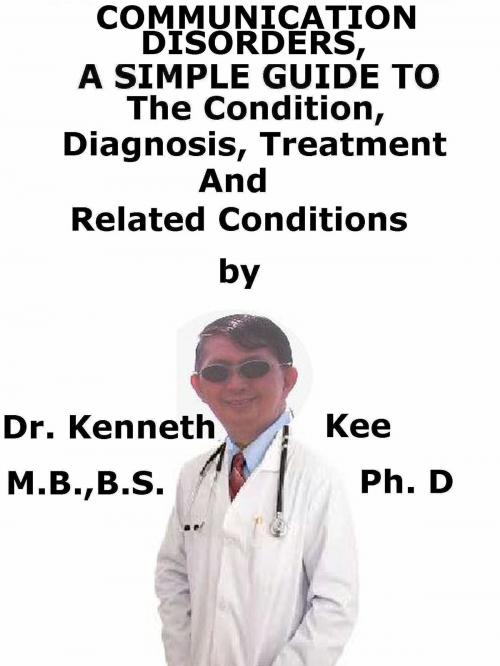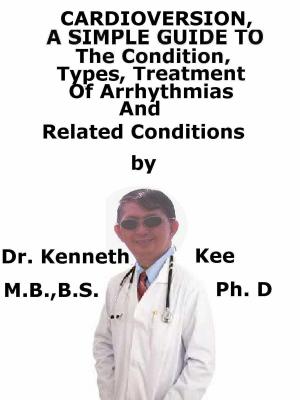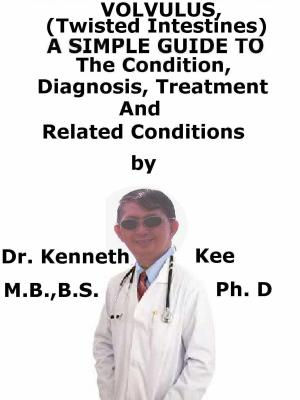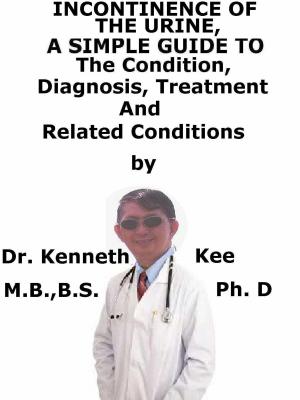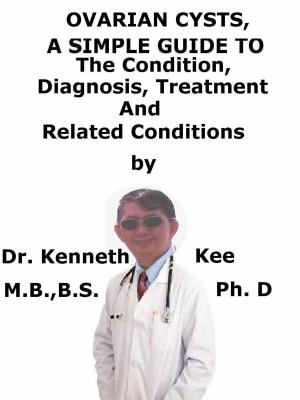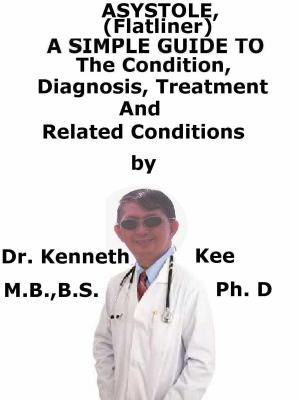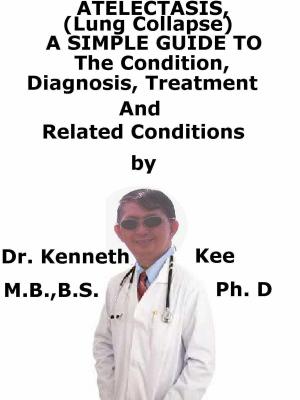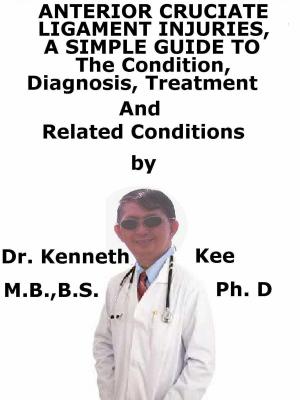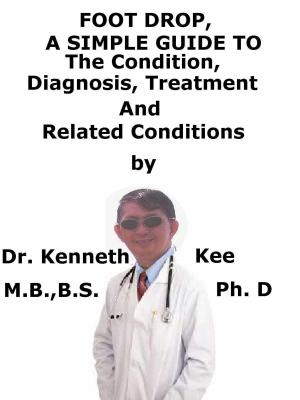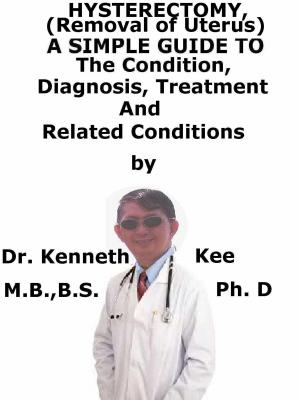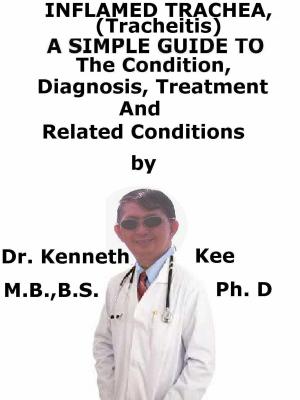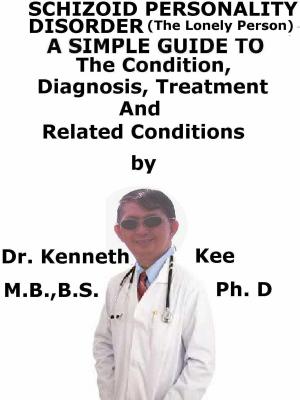Communication Disorders, A Simple Guide To The Condition, Diagnosis, Treatment And Related Conditions
Nonfiction, Health & Well Being, Health, Ailments & Diseases, Hearing, Medical, Specialties, Otorhinolaryngology| Author: | Kenneth Kee | ISBN: | 9781370973811 |
| Publisher: | Kenneth Kee | Publication: | August 22, 2017 |
| Imprint: | Smashwords Edition | Language: | English |
| Author: | Kenneth Kee |
| ISBN: | 9781370973811 |
| Publisher: | Kenneth Kee |
| Publication: | August 22, 2017 |
| Imprint: | Smashwords Edition |
| Language: | English |
Disorders that impair a patient’s communication abilities are:
1. Voice,
2. Speech,
3. Language,
4. Hearing, and
5. Cognition.
Recognizing and treating communication disorders is important,
The failure to do so may result in:
1. Isolation,
2. Depression, and
3. Loss of independence.
Voice disorder
A voice disorder is present when the voice’s quality, pitch, or volume differs from that of other persons of similar age, culture, and geographic location.
1. Dysphonia is categorized as either an organic or a functional disorder of the larynx.
Speech Disorder
1. Dysarthria, another form of communication disorder, comprises a group of motor speech disorders caused by a disturbance in the neuromuscular control of speech.
2. Apraxia, a second form of motor speech disorder, happens in the presence of significant weakness or in-coordination of the muscles of speech production.
Language disorder
Aphasia is a language disorder that occurs from the damage to the areas of the brain responsible for language understanding and expression while a cognitive-communicative disorder impairs the ability to communicate by affecting the pragmatics (social rules) of language.
Chronic Voice Disorders
Chronic laryngitis is a prolonged hoarseness of voice which affects the vocal cords causing difficulty in talking and communicating speech to a nearby person.
Dementia
People with dementia have problem understanding or recognizing the words spoken to them and unable to express their thoughts to the caregiver or family members.
Hearing Loss
With hearing loss comes the inability to hear the spoken words and hence the ability to communicate with people. However the use of sign language is a way of communication for these sufferers.
Communication is a multi-dimensional dynamic process that permits human beings to interact with their environment.
By communication, people are able to express their thoughts, needs, and emotions.
Communication is a complicated process that requires cerebration (use of the brain), cognition (understanding of words), hearing, speech production, and motor coordination.
The assessment of a communication disorder is consideration of all components of the normal communication process.
Language is the ability to transform thoughts into meaningful symbols that can be communicated by speech, writing, or gestures.
Thoughts are arranged by the brain, particularly the left hemisphere, and encoded into a string according to learned grammatical and linguistic rules.
These rules control the way sounds are arranged (phonology), the meaning of words (semantics), how words are formed (morphology), how words are mixed into phrases (syntax), and the use of language in context (pragmatics).
Diagnosis and referral
A treatable medical disorder must be excluded in all patients with voice disorders.
A voice disorder may be one of the first symptoms of laryngeal cancer.
Patients should be referred to an otolaryngologist (ear, nose, and throat specialist) for specialized examinations, which may be peripheral oral and nasal examination, voice analysis, and indirect or fiberoptic laryngoscopy.
Once an organic disorder has been either treated or ruled out, the patient may be referred to a speech-language pathologist (SLP).
Treatment
Effective treatment of aphasia is based on the detailed knowledge of a patient's cognitive and linguistic strengths and weaknesses taken from the formal testing evaluations.
Conventional treatment methods were directed on syndrome-specific methods, in which treatment was based on the diagnosed aphasia syndrome.
Cognitive-communicative disorders require the ability to communicate by diminishing the pragmatics, or social rules, of language.
TABLE OF CONTENT
Introduction
Chapter 1 Communication Disorders
Chapter 2 Dysarthria
Chapter 3 Dysphonia
Chapter 4 Ataxia
Chapter 5 Aphasia
Chapter 6 Hoarse Voice
Chapter 7 Dementia
Chapter 8 Hearing Loss
Epilogue
Disorders that impair a patient’s communication abilities are:
1. Voice,
2. Speech,
3. Language,
4. Hearing, and
5. Cognition.
Recognizing and treating communication disorders is important,
The failure to do so may result in:
1. Isolation,
2. Depression, and
3. Loss of independence.
Voice disorder
A voice disorder is present when the voice’s quality, pitch, or volume differs from that of other persons of similar age, culture, and geographic location.
1. Dysphonia is categorized as either an organic or a functional disorder of the larynx.
Speech Disorder
1. Dysarthria, another form of communication disorder, comprises a group of motor speech disorders caused by a disturbance in the neuromuscular control of speech.
2. Apraxia, a second form of motor speech disorder, happens in the presence of significant weakness or in-coordination of the muscles of speech production.
Language disorder
Aphasia is a language disorder that occurs from the damage to the areas of the brain responsible for language understanding and expression while a cognitive-communicative disorder impairs the ability to communicate by affecting the pragmatics (social rules) of language.
Chronic Voice Disorders
Chronic laryngitis is a prolonged hoarseness of voice which affects the vocal cords causing difficulty in talking and communicating speech to a nearby person.
Dementia
People with dementia have problem understanding or recognizing the words spoken to them and unable to express their thoughts to the caregiver or family members.
Hearing Loss
With hearing loss comes the inability to hear the spoken words and hence the ability to communicate with people. However the use of sign language is a way of communication for these sufferers.
Communication is a multi-dimensional dynamic process that permits human beings to interact with their environment.
By communication, people are able to express their thoughts, needs, and emotions.
Communication is a complicated process that requires cerebration (use of the brain), cognition (understanding of words), hearing, speech production, and motor coordination.
The assessment of a communication disorder is consideration of all components of the normal communication process.
Language is the ability to transform thoughts into meaningful symbols that can be communicated by speech, writing, or gestures.
Thoughts are arranged by the brain, particularly the left hemisphere, and encoded into a string according to learned grammatical and linguistic rules.
These rules control the way sounds are arranged (phonology), the meaning of words (semantics), how words are formed (morphology), how words are mixed into phrases (syntax), and the use of language in context (pragmatics).
Diagnosis and referral
A treatable medical disorder must be excluded in all patients with voice disorders.
A voice disorder may be one of the first symptoms of laryngeal cancer.
Patients should be referred to an otolaryngologist (ear, nose, and throat specialist) for specialized examinations, which may be peripheral oral and nasal examination, voice analysis, and indirect or fiberoptic laryngoscopy.
Once an organic disorder has been either treated or ruled out, the patient may be referred to a speech-language pathologist (SLP).
Treatment
Effective treatment of aphasia is based on the detailed knowledge of a patient's cognitive and linguistic strengths and weaknesses taken from the formal testing evaluations.
Conventional treatment methods were directed on syndrome-specific methods, in which treatment was based on the diagnosed aphasia syndrome.
Cognitive-communicative disorders require the ability to communicate by diminishing the pragmatics, or social rules, of language.
TABLE OF CONTENT
Introduction
Chapter 1 Communication Disorders
Chapter 2 Dysarthria
Chapter 3 Dysphonia
Chapter 4 Ataxia
Chapter 5 Aphasia
Chapter 6 Hoarse Voice
Chapter 7 Dementia
Chapter 8 Hearing Loss
Epilogue
